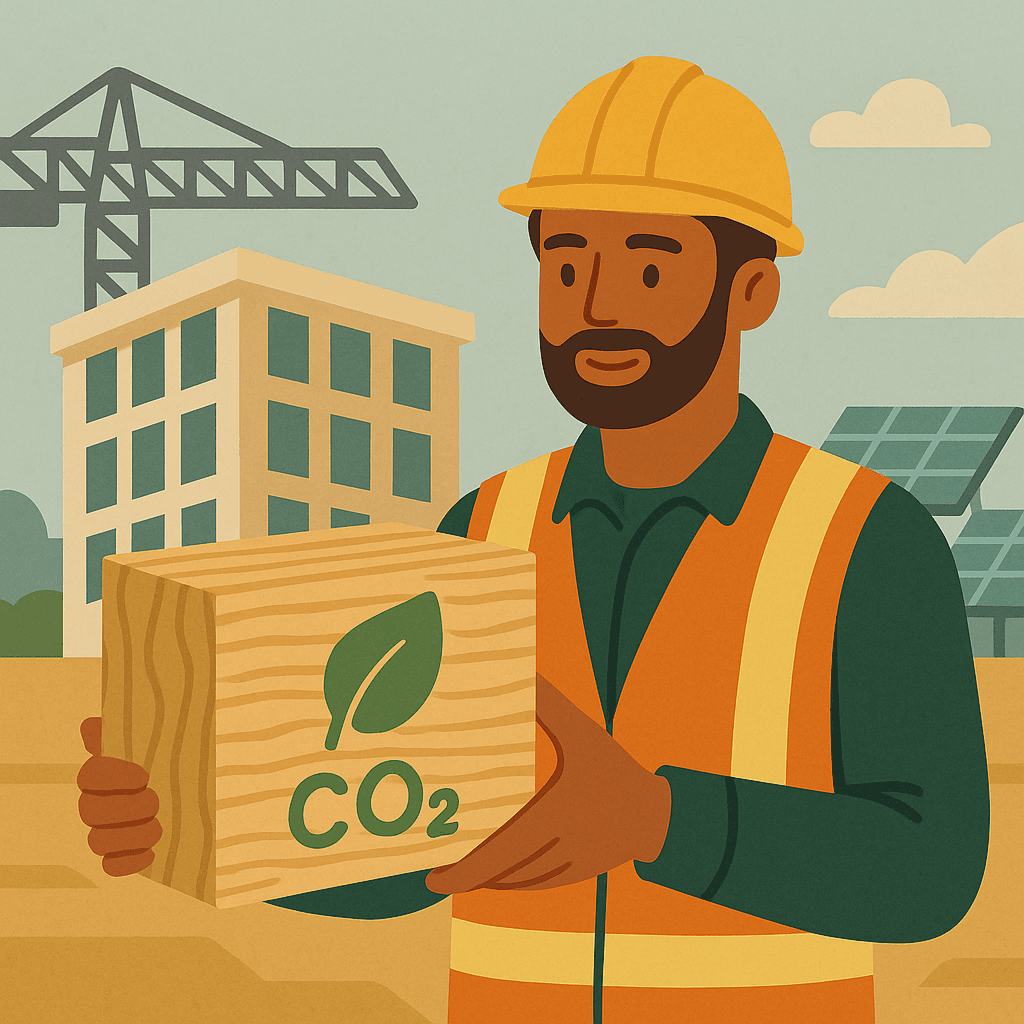New York’s Low-Carbon Tax Break: A6566/S7648 Decoded
Eight and a half percent. That is the average sales-tax bite on every cubic yard of concrete, lumber stud, or metal deck shipped into New York jobsites. Under the twin bills A6566/S7648, low-carbon versions dodge that bite entirely while qualifying plants pick up new grants to fund their EPD work. Miss the paperwork and you still pay full freight.


The bills at a glance
New York Assembly A6566 and Senate S7648, branded the Building Embodied Carbon Breakthrough Act, create three tools: a statewide sales-tax exemption for “qualifying low-carbon building materials,” competitive grants covering the cost of Environmental Product Declarations (EPDs) for concrete producers, and an expansion of C-PACE financing for retrofit projects (NY Senate, 2025). The bills passed out of committee in June with bipartisan votes and are queued for the 2026 budget deal.
How the tax math works
The state rate is four percent and the local slice averages 4.53 percent, for a combined 8.53 percent (Tax Foundation, 2025). A ready-mix order priced at $1 million today carries roughly $85 300 in sales tax. Under A6566/S7648 that line drops to zero if the mix’s global warming potential (GWP) lands below the yet-to-be-set Department of State threshold. Same truck, same crew, instant margin.
Which materials clear the bar
Draft rules signal a tiered approach. Category leaders such as Type IL cement concrete with 40 percent SCM substitution, steel plate with >90 percent recycled scrap, and FSC-certified engineered wood are all expected to qualify. Portland cement mixes without SCMs or virgin structural steel will struggle. RMI studies show SCM recipes can trim concrete GWP by up to 33 percent at negligible cost (RMI, 2024).
Your EPD is your ticket
The bills name third-party-verified, product-specific EPDs as the evidence needed to claim both the tax break and the concrete grant. Industry groups already publish some 35 000 plant-specific concrete EPDs, yet more than half of New York batch plants still lack one (NRMCA, 2025). No EPD means no exemption, period.
Timelines manufacturers should track
- The Department of Taxation will open a 60-day comment window within 90 days of the governor’s signature.
- Material-eligibility tables release 30 days later.
- Tax-free sales start the first day of the quarter following publication. That could be as early as January 1 2027.
Miss the first wave and competitors will market the saving while you scramble for data. This mean lost specs in public bids where every tenth of a point on cost scoring counts.
Speed matters on the grant side
Concrete producers can claim up to $50 000 per facility to cover EPD verification costs. Grants are capped at $10 million statewide and awarded first-come, first-served, so lining up plant utility bills, mix recipes, and shipping logs before the portal opens is crucial.
What to watch during rulemaking
- Embedded GWP limits: expect percentile targets (eg top 20 percent of current EPDs) rather than fixed kg CO₂e numbers.
- Project tracking: purchasers must retain invoices and EPD PDFs for six years. Accounting teams will own that audit trail.
- Reassessment cadence: every three years the Department may ratchet the thresholds downward, pushing continuous mix optimization.
Closing thought: margin is hiding in the paperwork
A6566/S7648 does not force anyone to use greener concrete or recycled steel. It simply shifts eight percent of every invoice from Albany back into project budgets for those who prove their carbon math. Manufacturers that bank the exemption early will look cheaper without changing a bolt. The only obstacle is the clock.
Frequently Asked Questions
Does every product need its own EPD to qualify for the tax exemption?
Yes. The draft bill text requires a product-specific, third-party-verified EPD showing the material meets the state’s embodied-carbon threshold. Generic or industry-average EPDs will not unlock the sales-tax exemption.
Can recycled content claims substitute for an EPD?
No. Recycled content helps lower embodied carbon, but the statute cites EPDs as the sole documentation accepted by the tax department.
What happens if my EPD is older than five years?
The Department is likely to follow ISO 14025 rules, which set a five-year refresh. Plan to re-verify before the exemption’s first sunset review.
Are the concrete grants limited to New York plants?
Yes. The bill language ties eligibility to facilities that deliver into New York and pay state corporate income tax.
